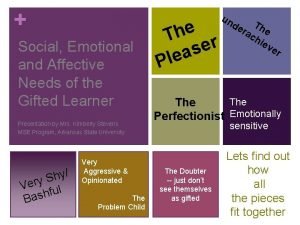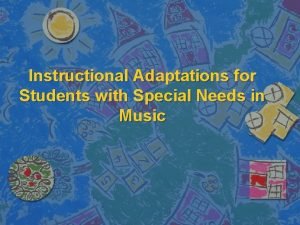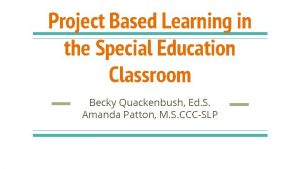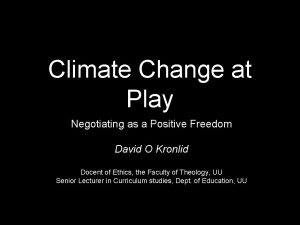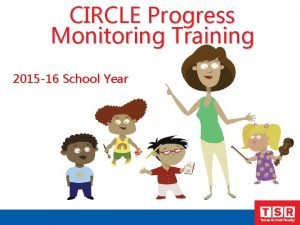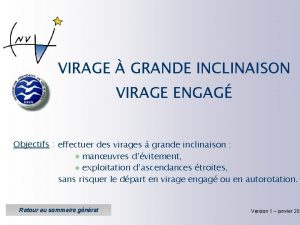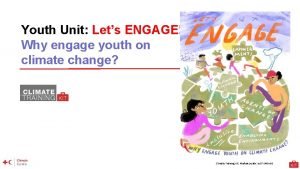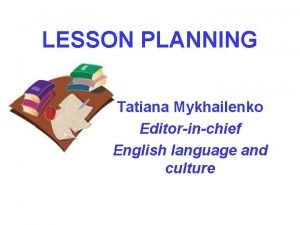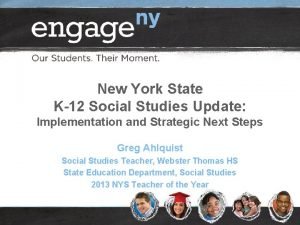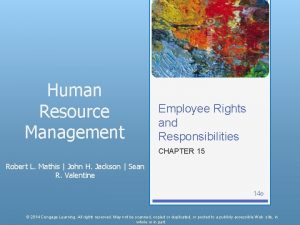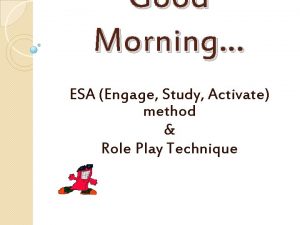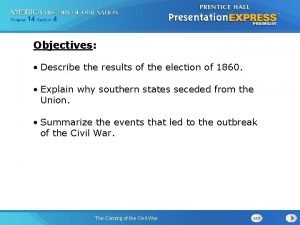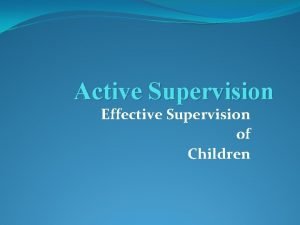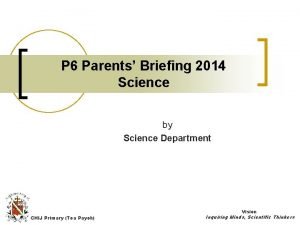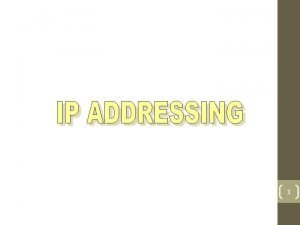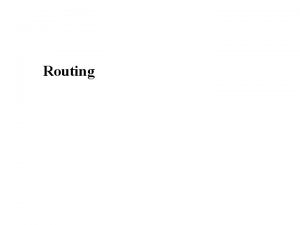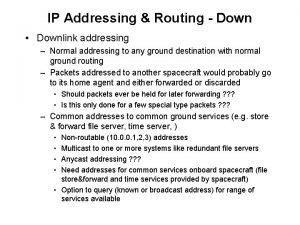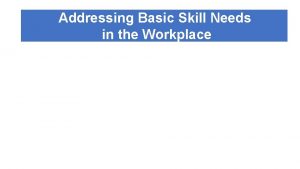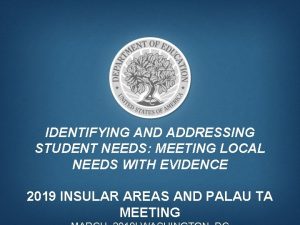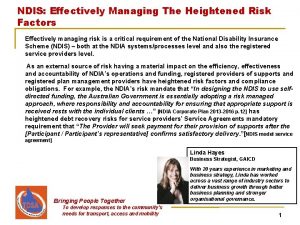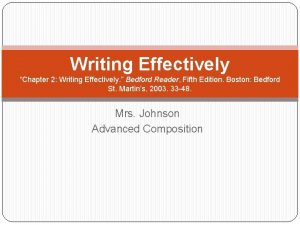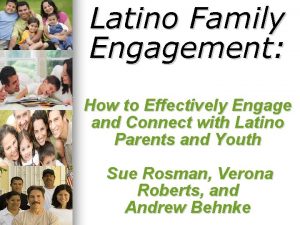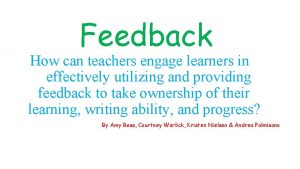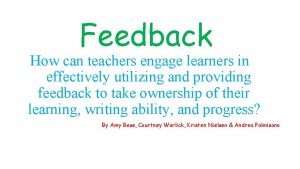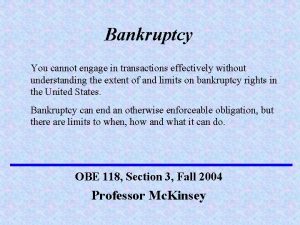Effectively Addressing the Needs of Students Who Engage



















































































- Slides: 83

Effectively Addressing the Needs of Students Who Engage in Escape and Avoidance Behavior Richard Van Acker, Ed. D. University of Illinois at Chicago 1040 W. Harrison Chicago, IL 60607 Email: vanacker@uic. edu

The role of the educator is more difficult today than ever before. . . n Greater expectations • No Child Left Behind n n n Meet or Exceed State Standards Use of empirically validated interventions State and federal curricular mandates • Common Core • Grade level exposure n n Larger class sizes More diverse student population • Ethnic • Linguistic - Cultural - Academic - Special Needs - Mental Health

Educators are not the only ones feeling the pressure… n Students too are displaying greater levels of anxiety in the face of these educational demands.

Effective instruction calls for a successful integration between… Student Characteristics Teacher Behavior Curricular Demands

When a Mismatch Occurs: n Escape or Avoidance Behaviors are likely • • Non-compliance Withdrawal Passive aggressive responses Defiance Disruptive behavior Destructive Behavior Aggression

The Fallacy of Punishment n n n Punishment is more likely to simply repress rather than change behavior. Punishment increases potential for escape behavior and student aggression. Serves to destroy the bond between the student and the teacher and often results in alienation of the student from school. Yet, … …. simple, predictable consequences IN COMBINATION with HIGH FREQUENCY recognition of desired behavior can prove effective.

Sustained Behavior Change Requires Feedback Name OTR Correct Academic Praise Behavioral Praise General James Hall Rene’ Jules Bill Franks Sasha Davies Ae’rion Jones Bo Hamilton Specific General Correction/Reprimand Specific Reprimand Redirect Error Other

Classroom Layout

Teacher Attention and Feedback Opportunity to Respond Verbal Praise for Academics Verbal Reprimand for Behavior Academic Verbal Correction Praise for Behavior // (2) ///// (14) ///// (8) /// (3) // (2) ///// // (12) // (2)

IDEA 1997 n n Mandate to develop a Behavior Intervention Plan to address behavior(s) of students with disabilities that impact their learning or the learning of others. When a change of placement to a more restrictive environment is being considered for a student with disability as the result of behavior. • More than 10 days of suspension (cumulative) is considered a change of placement.

IDEA 1997 n n Mandate to develop a Behavior Intervention Plan to address behavior(s) of students with disabilities that impact their learning or the learning of others. When a change of placement to a more restrictive environment is being considered for a student with disability as the result of behavior. • More than 10 days of suspension (cumulative) is considered a change of placement.

Functional Assessment of Behavior n The Behavior Intervention Plan is to be informed by a Functional Assessment of the students behavior. • Most human behaviors are learned. • These behaviors serve to meet needs and desires. • Student behavior (including misbehavior) typically ‘works’ for the student.

How might we typically address the following behavior? n n Jeremy is a third grade student. He has a hearing disorder. He frequently stands back and refuses to actively participate in the lesson. He will observe, but refuses to offer any responses or to engage in the assigned work.








Behavior can serve a variety of functions for a student n n n n Attention - always ask where the attention leads. Escape or Avoidance (Explore underlying need) Power, Control, or Competence Peer Affiliation Material Gain or Tangible Reward Self Gratification Justice or Revenge (Neel & Cessna, 1993)

Selecting an Appropriate Consequence (Function vs. Form) n n The nature of the surface behavior has little to do with the selection of an appropriate consequence. The function of the behavior should serve to direct the selection of the consequence.

Be Careful with Escape n n Escape and Avoidance is often a function of undesired behavior. Is Escape and Avoidance a basic human need?

Be Careful with Escape n n Escape and Avoidance is often a function of undesired behavior. Is Escape and Avoidance a basic human need? Maslow’s Hierarchy of Needs

Be Careful with Escape n n n Escape and Avoidance is often a function of undesired behavior. Is Escape and Avoidance a basic human need? Typically, Escape and Avoidance result from threats to the need for: • safety, Maslow’s Hierarchy of Needs • competence/self-esteem, and/or • autonomy.

Fear n Students may become frightened for any number of reasons at school. • Fear of failure • Fear of teacher • Fear of peers • Fear of unknown • Frightening locations • Post traumatic events Pro-ACT, 2016

What does FEAR look like? n Posture: n Breathing: n Action: n Communication:

Response for Fear n Threat reduction • Promote feelings of safety – safe distance, calm voice, necessary visuals. • Reassurance – “I want you to feel safe. ” n Two clear options for activities that will promote feelings of being safe and bring student into successful action. Pro-ACT, 2016

Frustration n Given the increased level of expectations held for today’s students, frustration is a common trigger for crisis in schools. • Unclear expectations • Challenging work Unfamiliar topics n Lack of knowledge or skill n • Too many errors reprimands

What does FRUSTRATION look like? n Posture: n Breathing: n Action: n Communication:

Response for Frustration n Lending Control - promotion of competence and success • Remain calm, confident • Reassure – “Stan, stop. Let’s sit down. ” n n Provide two clear choices that will allow student to be successful and competent while moving into desired activity. “Stan, I want you to be successful. Let’s turn back to the work we did yesterday and do one of those problems or we can get a drink of water and come back here and I will work with you on this math sheet. ” If you provide a student with a legitimate pathway to demonstrate competence – most will take it.

Think of a student you have worked with … n n Whose escape or avoidance behavior led to an episode where his or her behavior escalated into a crisis. What need was being threatened or unmet? What factors added to the escalation to bring it to a crisis level? What was done or could have been done to prevent further crisis behavior?

Fear and Frustration n Each table will engage in a series of role plays (of your design) that involve fear or frustration (as assigned). Each person in the group should take the opportunity to play the staff member. Each role play should include a threat of minor injury by the student. Use and empathetic “I statement” and two positive choices addressing the need of the student.

Two Aspects to Most BIPs n Increase Reasonable Alternative Behavior that Addresses the Function of the Target Behavior n Decrease the Display of the Target Behavior – Make it Less Effective in Meeting the Identified Function

Direct Behavior Intervention Plan Current Undesired Behavior: Expected Behavior: What need is being threatened or unmet? Student Displays the Desired Behavior Promotion of Success: (This includes efforts to bring level of instruction and opportunities to respond to the student’s level) Yes Response: Prevention Efforts: (This includes efforts to alter the environment, change in teacher behavior, etc. ) No Response:

What to do? ? ?

Student Behavior can Signal When Instructional Level is Not Appropriate: Careful Observation to Identify Triggers n n n Often as one of the people who spends the most time directly interacting with a student, you may quickly become aware of when a student moves away from his or her typical or ‘baseline’ behavior. This may be signaled by an increase or a decrease in behavior. A critical skill in working with children is to be good at observing triggers that may serve to move a student into a potential crisis situation.

Understanding the Crisis Escalation Deescalation Agitation Trigger Hangover/Recovery Adapted from: Managing the Cycle of Acting-Out Behavior in the Classroom By Dr. Geoff Colvin

Understanding the Crisis Escalation Deescalation Agitation Trigger Hangover Student Cognition Pro-Act, 2014

Understanding the Crisis Escalation Agitation Trigger Deescalation Staff Movement Away from Self Control Hangover Student Cognition

Understanding the Crisis Deescalation Escalation Staff Movement Agitation Away from Self Control Trigger Staff Cognition Student Cognition Hangover

Teacher Self-Control Plan n Critical that teachers and staff have an ACTIVE self-control plan that can be put in place quickly and repeatedly. • Breathing (e. g. , two deep breaths) • Self-Talk (e. g. , “I can deal with this. ”) • Grounding Action (e. g. Touch fingers together. )

Understanding the Crisis Escalation Deescalation Agitation Trigger Area of Greatest Influence Hangover

Provide a ‘Win-Win’ Opportunity n n n When confronted with challenging or noncompliant behavior, many teachers quickly revert to a “curriculum of control” They forget what they were attempting to accomplish with the student and switch to the goal of getting the student to “do what he was told!” Often they give situational control to the student and simply follow their challenging behavior attempting to gain the upper hand.

Understanding the Crisis De-escalation Escalation Agitation Trigger Hangover Clear expectations – one person engaged with the student – Key to promote safety of everyone (student, other students, staff). Use crisis communication – simple statements of what you want student to do. Stay calm and positive.

Understanding the Crisis Student is no more capable of processing information during deescalation than he was during escalation. De-escalation Escalation Agitation Trigger Active Listening to the student and re-engagement into the structure of the classroom instruction. Provide ‘hurdle help’ as needed to promote successful reintegration. Hangove r Whenever possible wait for student to return to baseline prior to processing event and delivery of consequences.

RESULTS: Baseline Basic Intervention Follow-Up Aggression Elopement Destruction Aggression Van Acker, E. Y. , & Van Acker, R, (2015)

Randy n n n Eight years old Deaf since birth Average intelligence Diagnosed with ADHDcombined type Significant deficits in social skills Will simply put his head down or if ‘pushed’ will run out of the classroom

Math Instruction (Word problems with addition and subtraction) n n n Ms. James was writing problems on the overhead projector and asking the students to copy these on their small white boards, Students were then directed to solve the problems (showing their work). When instructed to do so each child was to display their answers.

n n n n The classroom teacher has assigned the class to read the next 6 pages in the Social Studies text and to answer the questions at the end of the chapter. Randy starts to try and do the lesson. He begins to look upset. He is displaying increased movement and he is starting to look around the room and to divert his attention from the task. He mumbles to himself and starts to actively protest that, ”This shit is stupid. Nobody cares about this crap. ” The teacher moves towards Randy and asks if everything is okay? Randy says, “I don’t know why we can’t do this as a class or with partners. This is really boring!” The teacher says, “I know you can do this if you try – just do your best” Randy says, “I hate this shit!” The teacher says. “Randy you need to watch your language. You can not cuss in this classroom. ” Randy says, “Don’t tell me what I can and can not do. You aren’t my boss!” The teacher says, “Randy, we have to all get along and do what is asked of us – otherwise the classroom just won’t work. ” In a loud voice, Randy says, “I’m tired of this bullshit. I hate this f___king class. ” Randy starts to get up to exit the classroom. The teacher steps in his way (to block his exit) and says, “Sit down right now and do what I have asked you to do! Stop swearing!” Randy says, “F__k you! I am out of here!” The teacher moves towards Randy and grabs his arm – attempting to move him back to his seat. Randy shakes her hand off of his arm and pushes past her – exiting the

Debriefing Student Behavior Staff Behavior Escalate Neutral Reduce Options

Debriefing Student Behavior Staff Behavior Teacher assigns 6 pages to read Escalate Neutral Reduce Options

Debriefing Student Behavior Staff Behavior Teacher assigns 6 pages to read Starts to look agitated – This shit’s stupid Escalate Neutral Reduce Options

Debriefing Student Behavior Staff Behavior Teacher assigns 6 pages to read Starts to look agitated – This shit’s stupid Is everything ok? Escalate Neutral Reduce Options

Debriefing Student Behavior Staff Behavior Teacher assigns 6 pages to read Starts to look agitated – This shit’s stupid Is everything ok? Escalate Neutral Reduce Options

Debriefing Student Behavior Staff Behavior Teacher assigns 6 pages to read Starts to look agitated – This shit’s stupid Why not do this as a class, partners – This stuff is boring. Is everything ok? Escalate Neutral Reduce Options

Debriefing Student Behavior Staff Behavior Teacher assigns 6 pages to read Starts to look agitated – This shit’s stupid Is everything ok? Why not do this as a class, partners – This stuff is boring. Try – Do your best Escalate Neutral Reduce Options

Debriefing Student Behavior Staff Behavior Teacher assigns 6 pages to read Starts to look agitated – This shit’s stupid Is everything ok? Why not do this as a class, partners – This stuff is boring. Try – Do your best Escalate Neutral Reduce Options

Debriefing Student Behavior Staff Behavior Teacher assigns 6 pages to read Starts to look agitated – This shit’s stupid Is everything ok? Why not do this as a class, partners – This stuff is boring. Try – Do your best I hate this shit. Escalate Neutral Reduce Options

Debriefing Student Behavior Staff Behavior Teacher assigns 6 pages to read Starts to look agitated – This shit’s stupid Is everything ok? Why not do this as a class, partners – This stuff is boring. Try – Do your best I hate this shit. Watch your language – can’t cuss Escalate Neutral Reduce Options

Debriefing Student Behavior Staff Behavior Teacher assigns 6 pages to read Starts to look agitated – This shit’s stupid Is everything ok? Why not do this as a class, partners – This stuff is boring. Try – Do your best I hate this shit. Watch your language – can’t cuss Escalate Neutral Reduce Options

Debriefing Student Behavior Staff Behavior Teacher assigns 6 pages to read Starts to look agitated – This shit’s stupid Is everything ok? Why not do this as a class, partners – This stuff is boring. Try – Do your best I hate this shit. Watch your language – can’t cuss Don’t tell me what to do – you are not my boss Escalate Neutral Reduce Options

Debriefing Student Behavior Staff Behavior Teacher assigns 6 pages to read Starts to look agitated – This shit’s stupid Is everything ok? Why not do this as a class, partners – This stuff is boring. Try – Do your best I hate this shit. Watch your language – can’t cuss Don’t tell me what to do – you are not my boss We have to get along or school won’t work Escalate Neutral Reduce Options

Debriefing Student Behavior Staff Behavior Teacher assigns 6 pages to read Starts to look agitated – This shit’s stupid Is everything ok? Why not do this as a class, partners – This stuff is boring. Try – Do your best I hate this shit. Watch your language – can’t cuss Don’t tell me what to do – you are not my boss We have to get along or school won’t work Escalate Neutral Reduce Options

Debriefing Student Behavior Staff Behavior Teacher assigns 6 pages to read Starts to look agitated – This shit’s stupid Is everything ok? Why not do this as a class, partners – This stuff is boring. Try – Do your best I hate this shit. Watch your language – can’t cuss Don’t tell me what to do – you are not my boss We have to get along or school won’t work Tired of this bullsh_t, I hate this f_cking class Escalate Neutral Reduce Options

Debriefing Student Behavior Staff Behavior Teacher assigns 6 pages to read Starts to look agitated – This shit’s stupid Is everything ok? Why not do this as a class, partners – This stuff is boring. Try – Do your best I hate this shit. Watch your language – can’t cuss Don’t tell me what to do – you are not my boss We have to get along or school won’t work Tired of this bullsh_t, I hate this f_cking class Stop swearing – Sit down right now – Blocks exit Escalate Neutral Reduce Options

Debriefing Student Behavior Staff Behavior Teacher assigns 6 pages to read Starts to look agitated – This shit’s stupid Is everything ok? Why not do this as a class, partners – This stuff is boring. Try – Do your best I hate this shit. Watch your language – can’t cuss Don’t tell me what to do – you are not my boss We have to get along or school won’t work Tired of this bullsh_t, I hate this f_cking class Stop swearing – Sit down right now – Blocks exit Escalate Neutral Reduce Options

Debriefing Student Behavior Staff Behavior Teacher assigns 6 pages to read Starts to look agitated – This shit’s stupid Is everything ok? Why not do this as a class, partners – This stuff is boring. Try – Do your best I hate this shit. Watch your language – can’t cuss Don’t tell me what to do – you are not my boss We have to get along or school won’t work Tired of this bullsh_t, I hate this f_cking class Stop swearing – Sit down right now – Blocks exit F_ck you! I am out of here – starts to exit Escalate Neutral Reduce Options

Debriefing Student Behavior Staff Behavior Teacher assigns 6 pages to read Starts to look agitated – This shit’s stupid Is everything ok? Why not do this as a class, partners – This stuff is boring. Try – Do your best I hate this shit. Watch your language – can’t cuss Don’t tell me what to do – you are not my boss We have to get along or school won’t work Tired of this bullsh_t, I hate this f_cking class Stop swearing – Sit down right now – Blocks exit F_ck you! I am out of here – starts to exit Teacher grabs his arm and attempts to guide him to seat Escalate Neutral Reduce Options

Debriefing Student Behavior Staff Behavior Teacher assigns 6 pages to read Starts to look agitated – This shit’s stupid Is everything ok? Why not do this as a class, partners – This stuff is boring. Try – Do your best I hate this shit. Watch your language – can’t cuss Don’t tell me what to do – you are not my boss We have to get along or school won’t work Tired of this bullsh_t, I hate this f_cking class Stop swearing – Sit down right now – Blocks exit F_ck you! I am out of here – starts to exit Teacher grabs his arm and attempts to guide him to seat Escalate Neutral Reduce Options

Debriefing Student Behavior Staff Behavior Teacher assigns 6 pages to read Starts to look agitated – This shit’s stupid Is everything ok? Why not do this as a class, partners – This stuff is boring. Try – Do your best I hate this shit. Watch your language – can’t cuss Don’t tell me what to do – you are not my boss We have to get along or school won’t work Tired of this bullsh_t, I hate this f_cking class Stop swearing – Sit down right now – Blocks exit F_ck you! I am out of here – starts to exit Teacher grabs his arm and attempts to guide him to seat Shakes her arm off - He pushes past Escalate Neutral Reduce Options

Common Triggers Trigger Writing Given subject (e. g. , math, reading) Messages of failure (reprimands, academic corrections) Multiple stressors (‘basket’ student) Too long or demanding work Peer relations/social problems Sensory issues Issues at home (divorce, abuse & neglect, disability) Option


Consider your classroom diversity

Clearly Signal Expected Behavior n n Students must raise their hands and wait to be called upon vs. Use inside voice as long as you do not ‘step on someone else’s speech. ’ Native American – speech stick (only the person holding the stick can speak). 0 1 2 3 4

Library Envelope System n Make one library pocket card for each student Number of cards Aaron Lashika Randy Sarah Anita Lashonda based on baseline data – student need. Joe Mary Scott Free ticket 2 -3 minute delay 5 min delay to recess or passing

Simple Consequence to Reduce High Rate Behaviors

Developing a Group Contingency or HERO System n n n n Establish developmentally reasonable time interval for implementation Collect baseline data on the frequency of the target behavior to be addressed (be specific to the nature of the behavior) Identify nature of the system (group vs. hero) and structure (marks, stars, etc) Provide a number of marks somewhat larger than the average number of target behaviors observed during baseline Remove one mark each time the behavior is observed. Do not enter into power struggle with student. Reinforce if ANY marks remain at the end of the specified interval. Over time, slowly reduce the number of marks provided at the start of the interval or lengthen the interval.

To Increase Desired Behavior (Modified Check-IN) I am doing my work. I am following the teacher’s directions. ///// I am using kind words and actions. Bonus: ///// / Ignored teasing of others

Student Recommended for CICO Implemented CICO Coordinator Summarizes Data For Decision Making Morning Check-in Parent Feedback Regular Teacher Feedback Bi-weekly Meeting to Assess Student Progress Afternoon Check-out Revise Program Graduate Program

Student: __________ Teacher: ________ Date: ____ Subject Area Soc Stud Math Science Reading Displays kind and welcoming behavior towards others Teases, taunts or displays rude or disrespectful behavior towards others Threatens harm or displays verbal/physical aggression towards others 4 1 0 4 1 0 Stays in the Assigned Area Exits the classroom without permission (any time during interval) Out of seat or assigned area and fails to comply with initial request to return Remains in the seat or assigned area throughout the interval Out of seat or instructional area but returns the first time asked 4 2 1 0 4 2 1 0 BE PREPARED TO LEARN On-task more than 85% of the interval On task more than 50% but less than 85% of the interval On-task more than 10% but less than 50% of the interval On-task less than 10% of the interval 3 2 1 0 3 2 1 0 Work completed with reasonable level of effort (Not concerned with accuracy or neatness at this time) Effort expended at a reasonable level but work not completed Little or no work attempted 4 2 0 4 2 0 Behavior BE SAFE Uses Kind words and actions Active Task Engagement Work Completion Bonus Points Comments: Scoring Rubric

Blueprints for Intervention n Identify common behavior problems in your school. Identify possible alternative behaviors that should be taught. Explore the various functions for these behaviors and identify: • Ways teachers can teach desired behaviors and provide necessary practice and feedback. • Teacher behaviors and interventions to avoid. • Potentially effective ways to reinforce desired behavior. • Potentially appropriate ways to address undesired behavior. www. dpi. state. wi. us/dpi/dlsea/een/ebdbluepri. html

No one likes change but a wet baby!
 Flat addressing vs hierarchical addressing
Flat addressing vs hierarchical addressing Primary needs and secondary needs
Primary needs and secondary needs Target need analysis
Target need analysis Primary needs and secondary needs
Primary needs and secondary needs Simple claustral complex
Simple claustral complex Strategic gender needs and practical gender needs
Strategic gender needs and practical gender needs Affective needs of gifted students
Affective needs of gifted students Instructional adaptations for special needs students
Instructional adaptations for special needs students Social emotional needs of ell students
Social emotional needs of ell students Project based learning for students with special needs
Project based learning for students with special needs Surveying course of rizal
Surveying course of rizal Dr kedar prasad micro daily
Dr kedar prasad micro daily Engage learning
Engage learning Ilinx engage
Ilinx engage Poor listening skills
Poor listening skills Circle progress monitoring
Circle progress monitoring Engage explore explain elaborate evaluate
Engage explore explain elaborate evaluate Esgo engage
Esgo engage Engage calgary
Engage calgary Vixie engage consult download
Vixie engage consult download Virage engagé
Virage engagé Lets engage
Lets engage Clt lesson plan
Clt lesson plan What is kindergarten curriculum night
What is kindergarten curriculum night Engage learning
Engage learning Engage
Engage Bisj engage
Bisj engage Cli engage login
Cli engage login Nys social studies toolkit
Nys social studies toolkit Crystal dashboard
Crystal dashboard Engage learning
Engage learning Questioning and discussion techniques
Questioning and discussion techniques Engage study activate method
Engage study activate method How to engage high potential employees
How to engage high potential employees Engage/ch fasex 4/14
Engage/ch fasex 4/14 Learn empower evolve
Learn empower evolve Active supervision definition
Active supervision definition Picasso peintre engagé
Picasso peintre engagé Engage explore explain elaborate evaluate
Engage explore explain elaborate evaluate Ipegs standards
Ipegs standards Psu harrisburg engage
Psu harrisburg engage Engage in excavation
Engage in excavation Bổ thể
Bổ thể Tư thế worms-breton
Tư thế worms-breton ưu thế lai là gì
ưu thế lai là gì Thẻ vin
Thẻ vin Thể thơ truyền thống
Thể thơ truyền thống Cái miệng nó xinh thế chỉ nói điều hay thôi
Cái miệng nó xinh thế chỉ nói điều hay thôi Các châu lục và đại dương trên thế giới
Các châu lục và đại dương trên thế giới Từ ngữ thể hiện lòng nhân hậu
Từ ngữ thể hiện lòng nhân hậu Diễn thế sinh thái là
Diễn thế sinh thái là Tư thế ngồi viết
Tư thế ngồi viết Thế nào là giọng cùng tên? *
Thế nào là giọng cùng tên? * Phép trừ bù
Phép trừ bù Bài hát chúa yêu trần thế alleluia
Bài hát chúa yêu trần thế alleluia Khi nào hổ con có thể sống độc lập
Khi nào hổ con có thể sống độc lập đại từ thay thế
đại từ thay thế Quá trình desamine hóa có thể tạo ra
Quá trình desamine hóa có thể tạo ra Vẽ hình chiếu vuông góc của vật thể sau
Vẽ hình chiếu vuông góc của vật thể sau Cong thức tính động năng
Cong thức tính động năng Hình ảnh bộ gõ cơ thể búng tay
Hình ảnh bộ gõ cơ thể búng tay Tỉ lệ cơ thể trẻ em
Tỉ lệ cơ thể trẻ em Thế nào là mạng điện lắp đặt kiểu nổi
Thế nào là mạng điện lắp đặt kiểu nổi Dạng đột biến một nhiễm là
Dạng đột biến một nhiễm là Lời thề hippocrates
Lời thề hippocrates Vẽ hình chiếu đứng bằng cạnh của vật thể
Vẽ hình chiếu đứng bằng cạnh của vật thể Phản ứng thế ankan
Phản ứng thế ankan Các môn thể thao bắt đầu bằng tiếng đua
Các môn thể thao bắt đầu bằng tiếng đua Khi nào hổ mẹ dạy hổ con săn mồi
Khi nào hổ mẹ dạy hổ con săn mồi điện thế nghỉ
điện thế nghỉ Nguyên nhân của sự mỏi cơ sinh 8
Nguyên nhân của sự mỏi cơ sinh 8 Trời xanh đây là của chúng ta thể thơ
Trời xanh đây là của chúng ta thể thơ Lp html
Lp html Gấu đi như thế nào
Gấu đi như thế nào Thế nào là số nguyên tố
Thế nào là số nguyên tố Thiếu nhi thế giới liên hoan
Thiếu nhi thế giới liên hoan Phối cảnh
Phối cảnh Các châu lục và đại dương trên thế giới
Các châu lục và đại dương trên thế giới Một số thể thơ truyền thống
Một số thể thơ truyền thống Thế nào là hệ số cao nhất
Thế nào là hệ số cao nhất Hệ hô hấp
Hệ hô hấp Tư thế ngồi viết
Tư thế ngồi viết đặc điểm cơ thể của người tối cổ
đặc điểm cơ thể của người tối cổ Cách giải mật thư tọa độ
Cách giải mật thư tọa độ






